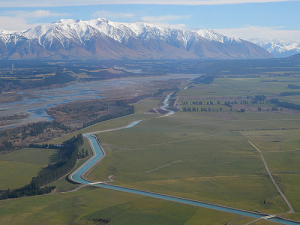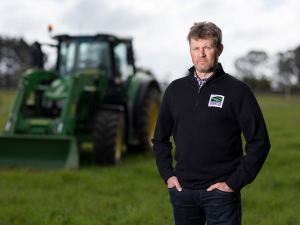Earlier in August they targeted a Central Plains Water worksite in a protest against ‘big irrigation’ but unfortunately many facts they were espousing were incorrect or coloured.
To balance these claims, Cantabrians need to fully understand projects like the Central Plains Water Scheme and its positive effect on the Selwyn Te Waihora (Lake Ellesmere) catchment and its role in restoring it.
A study by Irrigation NZ shows there is no correlation between areas of high irrigation development and regions with poor water quality.
In fact, here on our doorstep Environment Canterbury has already discovered that the restoration of Te Waihora cannot be achieved without the CPW scheme and its ability to protect the aquifers.
Concern about our waterways is high and to say that irrigation and/or Central Plains Water is responsible for the condition of the Selwyn River or Te Waihora is wrong. CPW has been operating for only two years; the Te Waihora issues have been known for decades.
Key to the establishment of CPW is our desire to protect and enhance Canterbury’s water quality. We want to be recognised environmentally as a world leader and we will do this, over time, by protecting and enhancing the surrounding waterways. If we fail in this aspect, then the scheme has no future. Like farmers, we are caretakers protecting the quality of our land.
How will we do this? There are two key ways.
1) Protecting the aquifers. By taking water from the Rakaia River in a controlled way we are protecting the aquifers, because farmers need no longer rely on groundwater wells and artesian supplies.
Stage 1 has already completed its second successful irrigation season and is showing exciting benefits such as existing groundwater irrigators only abstracting 25% of their groundwater allocation during the 2015-16-17 season, leaving 60 million m3 of water in the aquifers. Year-on-year, these quantities of water flowing through the aquifers will be very good for Te Waihora and the surrounding waterways.
An indicator of our ambition to be a guardian of the environment is that we have recently agreed with ECan to discharge 3.5 cumecs (45 million m3) per year into the Selwyn to replenish the flows.
The claim that irrigation is all for dairy conversions is not correct. Yes, some farms will convert but they will have to manage within acceptable nutrient levels, as already mentioned. Many farmers do not want to go dairy farming and some soils are not suitable, so cropping, sheep, beef and deer will continue to be a major land use. In our stage 2 area, indications are that only 15% of the area will convert to dairy and the remainder will continue to be top quality cropping land.
2) Controlling and reducing use of nutrients. Nutrient levels on farms inside the CPW scheme are monitored and audited yearly and with every farm having its own management plan, the reduction in nutrient application is one of the key environmental pillars on which the scheme is built.
In the long term, even with the completion of stage 2, our nutrient discharge levels will be lower in 2022 than they are today because of new management practices and consent requirements.
As part of this environmental focus, we have set up at least 50 monitoring points downstream of the scheme, have established an environmental management fund of about $160,000 per year and also the Te Waihora Enhancement Fund ($160,000/year).
We also work with the Selwyn Waihora water zone committee, which is implementing the Canterbury water management strategy in the area.
Today’s water issues are the result of problems that have developed over several decades, but with today’s greater knowledge and understanding of environmental issues, the creation of the Canterbury water management strategy, the introduction of the land and water regional plan and the effort and desire of companies like CPW, more constructive steps are being taken to address and remedy our water issues.
• Derek Crombie is chief executive of Central Plains Water Ltd.









